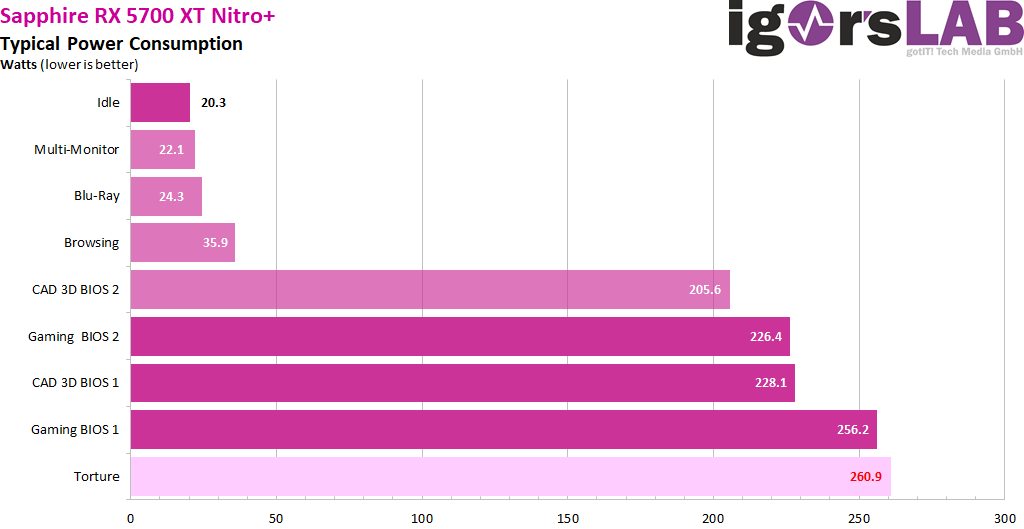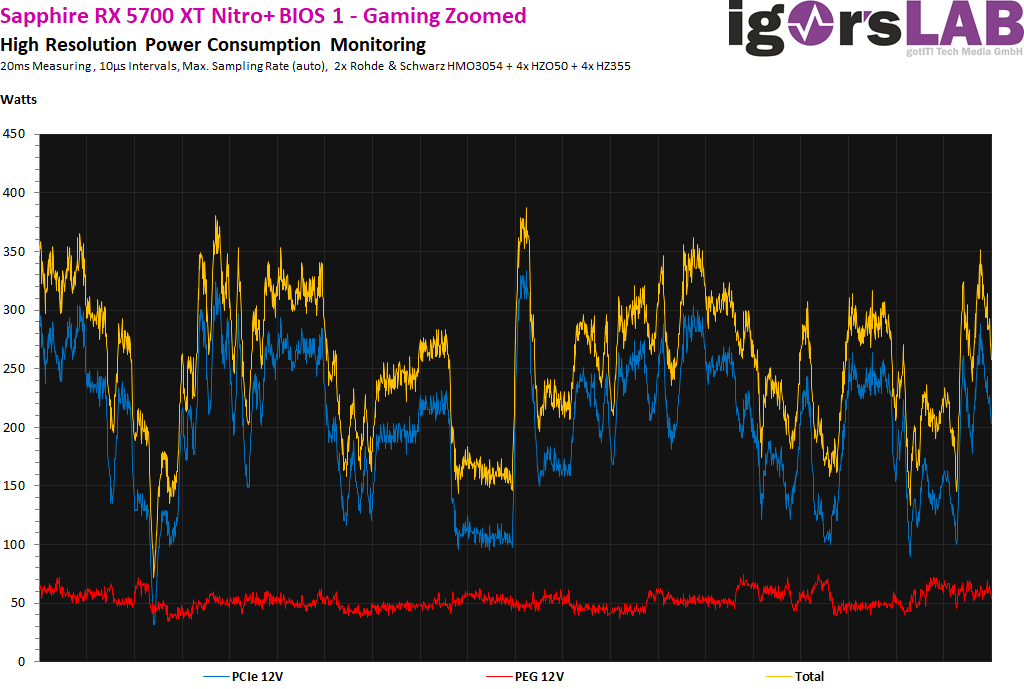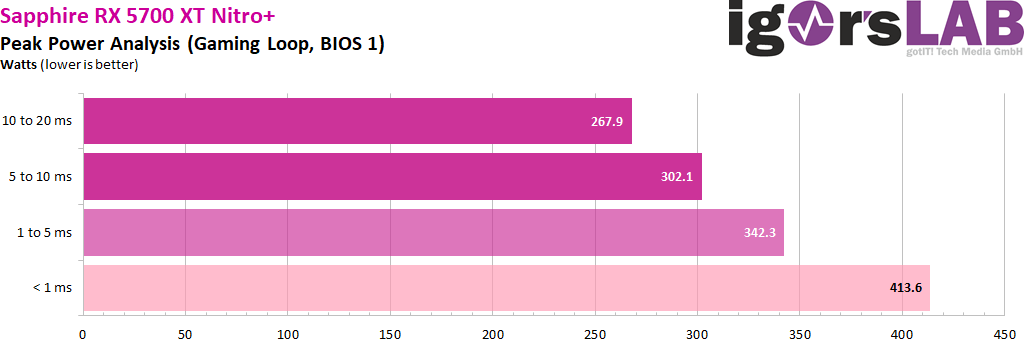How to calculate the graphics card correctly
What I would advise to do, however, is an emotionless and in practice also significantly differentiated consideration of the possible power consumption or the flow of currents on the individual rails. Taking the pure TBP (Typical Board Power) as the basis for a power supply calculation would be plentiful blue-eyed and it suddenly becomes apparent why graphics card manufacturers often estimate significantly higher values. This is not a job creation measure for the power supply industry, but pure caution.
Without a really detailed review in this area, it is of course very difficult to estimate where the peaks are and how long the intervals of the peaks are at all. However, the inclusion of transients is essential for safe operation, because if the manufacturers of power supplies calculate one with a sharp pin, it is the expensive capacitors. In the following overview, as I use them in my graphics card reviews, I record the load changes by length and maximum value. Here’s an example of a current AMD graphics card:

For the approx. 256 watts result in the following load peaks (depending on the duration):
Peaks with intervals between 1 and 10 ms can lead to shutdowns with very fast-reacting protective circuits (OPP, OCP), especially for multi-rail power supplies, although the average power consumption is still in the norm. For this card, I would therefore calculate with almost 350 watts for the graphics card as such, in order to have enough reserves in case of cases. A short excerpt with high resolution now show us the 20 ms intervals, how I run them automatically for valuation:

Conclusion
The very short load peaks can be safely set aside and one should really only think about values that are over one to two milliseconds. By the way, not only because of the possible shutdown of the power supply by a protective mechanism, but also because of the durability. The more hectic such a graphics accelerator sucks on the power supply, the faster the secondary capacitors get into the area of long-term care insurance. Whothen saves in the end is wrongly advised.
Of course, humbug is also something like 100% Japanese capacitors, because even the big Japanese now mostly manufacture in China. So you should first look at a really good power supply review, where the specifications of the secondary circuit are also discussed. Components make the difference, not any (beautiful) measurement curves. If then I would orientate myself to the “normal peak” presented here, maximum still at the maximum interval and hope that the manufacturer has packed reserves on its own. Poor advice is who calculates narrowly on edge and hopes that it will somehow go well.
I would therefore recommend that for power consumption areas of the graphics card between 150 and 200 watts TBP, the margin of the graphics card should be calculated by around 50 watts more and above that for high-end systems from approx. Just add 200 watts for safety and always 100 watts of reserve. This should cover the peculiarities of AMD and Nvidia cards well and you don’t have to spend hours on component control. In terms of perspective, it is also the colleagues who test graphics cards, because the collection of such important values is really not a witchcraft.































Kommentieren